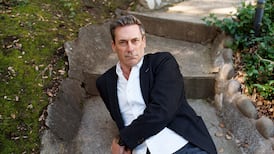In Switzerland drought in the Alps has seen military helicopters used to lift huge containers of water up to the pastures to prevent herds dying of thirst. On the depleted waters of the Rhine, Germany’s economic artery, barges are travelling semi-laden to remain afloat – the loss of a further seven centimetres of water depth would make the river all but unnavigable.
In Portugal and elsewhere low lakes are sharply reducing hydroelectricity capacity at a time of an energy supply crunch. Western Europe’s hydropower output dropped 20 per cent in the second quarter compared to the average, while Norway may curb power exports to Europe as a result.
Land is drying up, crops are being starved of irrigation. Food will become scarcer and more expensive. Wildfires are rife.
France, in emergency mode, describes the drought as the worst it has ever seen. The Loire is now in parts a rivulet, and some 93 regions are facing water restrictions. The Netherlands has declared a national water shortage. Spain has lost an area double the size of Singapore to wildfires in the year’s first seven months. Britain is to declare a drought emergency as southeastern England approaches 150 days with little or no rain.
Romania’s world-leading corn exporters expect to lose over a third of their crops to drought, while in Italy farmers predict a loss of 30 per cent. The Po River basin, home to 17 million people, is facing what the prime minister describes as the “most serious water crisis in 70 years.”
Wildlife is struggling everywhere, threatening already-endangered biodiversity. Hundreds of fish died in Austria last month as heat drained the Zicksee lake. A Bavarian conservation association this month even warned about starving hedgehogs as worms burrow deeper into dry soils in search of moisture.
The European Drought Observatory says nearly half of Europe is under “warning” conditions, a severe drought and a major soil moisture deficit. It predicts it will be the worst in 500 years. A further 17 per cent has reached the threshold at which vegetation suffers, in some cases dying out or thinning. Satellite pictures illustrate a green continent that is browning fast – July was the continent’s sixth-warmest on record.
Brussels estimated last year that drought-related damage would cost the EU about €9 billion per year, soaring to an annual €40 billion if global warming were to reach 3 degrees centigrade above pre-industrial levels. Scientists blame the combination of an unusually dry winter followed by an equally dry spring and a summer of baking heat, part of a warming trend brought on by climate change. Such summers, they predict, will increasingly be the norm – the price of human causation and human inaction. What more evidence do we need of the terrible cost of climate change?













